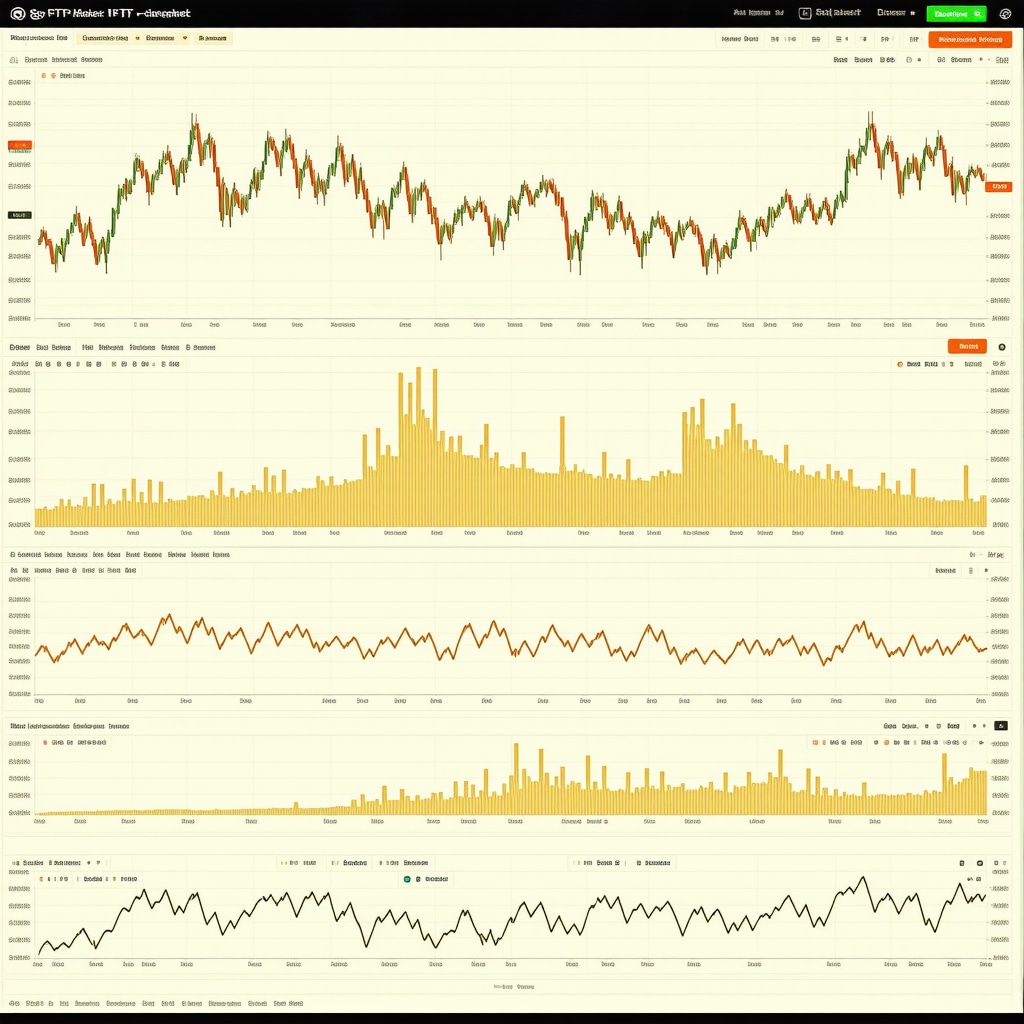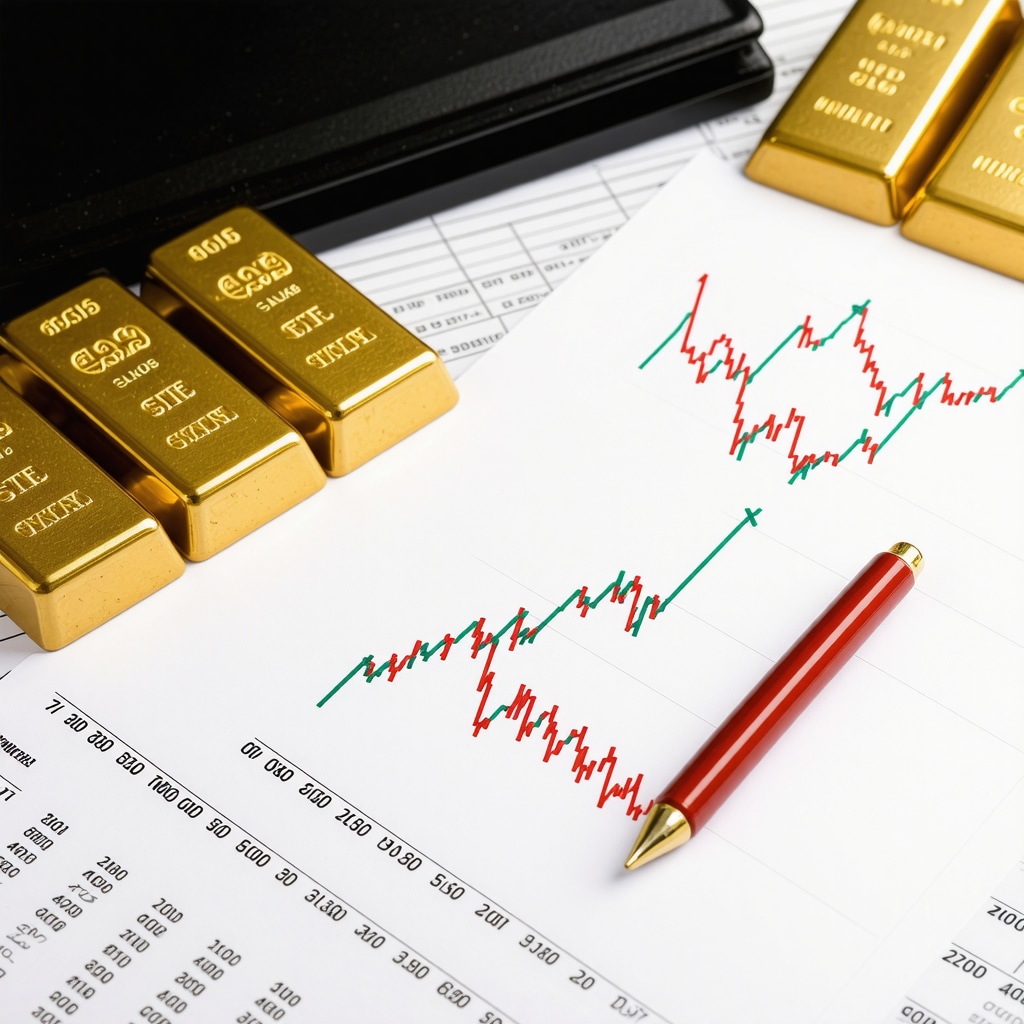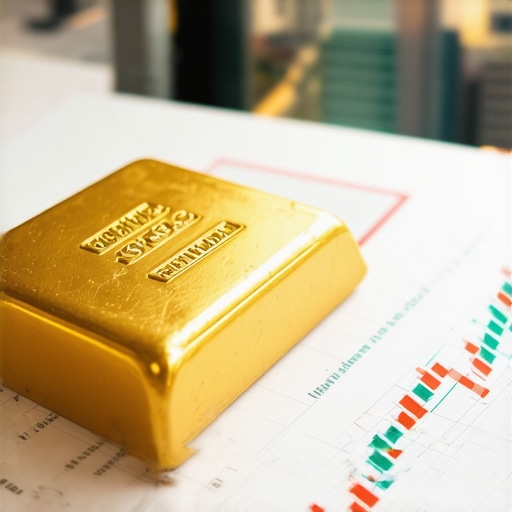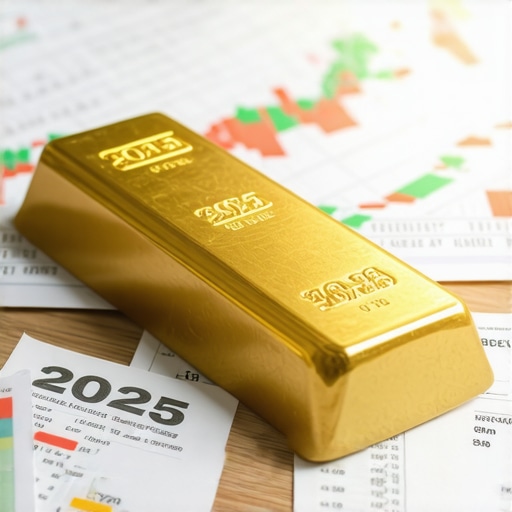Why Gold ETFs Are the Shiny Star in Your Investment Galaxy
Ah, gold—the timeless hedge, the glittering refuge in stormy markets. But how do you sift through the glitter to find the gold that truly shines? If you’re eyeing gold ETFs to spice up your portfolio, buckle up. Gold ETFs combine the allure of physical gold with the convenience of stock-like liquidity, making them a favorite among savvy investors. But not all ETFs are created equal, and picking the right one can be as tricky as spotting a real nugget in a pan full of sand.
Digging Deeper: What Should You Really Look For?
First off, don’t be dazzled by the sparkle alone. Look under the hood. Expense ratios matter—a lot. The lower, the better, because high fees can quietly eat into your returns over time. Liquidity is another gem; ETFs with higher average trading volumes mean you can buy and sell without sweating over price slippage.
Next, consider the fund’s structure. Physically backed ETFs hold actual gold, offering a direct link to the metal’s price movements. Synthetic ETFs, on the other hand, rely on derivatives and can carry counterparty risks. For those who prefer that tangible security feeling, physically backed options are generally the safer bet. For a nuanced take on the differences, check out expert insights at physical gold versus ETFs explained.
Ever Wondered If All Gold ETFs Are Created Equal?
It’s tempting to think so, but the devil’s in the details. Some ETFs hold gold bars stored in vaults with impeccable security, while others might spread their holdings across multiple locations, impacting insurance costs and accessibility. Plus, the trustworthiness of the custodian can make or break your peace of mind. Always dig into the fund’s prospectus and see who’s watching over your shiny assets.
Experience Speaks: Stories From the Gold Trenches
I recall a seasoned investor friend who once jumped headfirst into a low-cost gold ETF only to discover it was synthetic. When the derivatives market wobbled, so did his returns—much more than he anticipated. That experience underlines the importance of understanding what you’re buying beyond surface-level allure.
Can You Afford to Ignore Market Trends?
Absolutely not. Gold demand fluctuates with economic tides, geopolitical shifts, and central bank maneuvers. Staying updated on these trends can give you an edge. For a deeper dive into how these forces shape gold prices, the latest demand trends report is a treasure trove.
And before you dash off to invest, consider this nugget from Investopedia’s authoritative guide: “Gold ETFs offer investors exposure to gold without the challenges of physical storage and security.” But remember, convenience comes at a cost—know those fees and risks inside out.
Ready to Make Your Move?
Gold ETFs can be a brilliant addition to your portfolio—but only if you choose wisely. What’s your experience with gold ETFs? Have you uncovered any hidden gems or faced unexpected pitfalls? Share your stories and questions below, and let’s turn this golden conversation into a treasure trove of collective wisdom.
Understanding the Hidden Complexities Behind Gold ETF Structures
While we briefly touched on the difference between physically backed and synthetic gold ETFs, diving deeper reveals nuances that can dramatically influence your investment outcomes. Physically backed ETFs hold tangible bullion, often stored in high-security vaults, providing a direct correlation with gold spot prices. However, the costs associated with storage, insurance, and vault security get embedded within the expense ratios. On the other hand, synthetic ETFs use derivatives and swaps to mimic gold price movements, which may introduce counterparty risks and liquidity concerns during market stress.
Investors should evaluate how these structures align with their risk tolerance and investment horizon. For those prioritizing tangible asset security, physically backed ETFs are preferable, but for traders seeking liquidity and lower upfront costs, synthetic options might appeal—albeit with added risks. To master these choices, exploring physical gold versus ETFs explained offers an expert perspective on balancing these factors.
Gold ETFs and Market Liquidity: Why It Matters More Than You Think
Liquidity isn’t just a buzzword—it’s a critical factor determining your ability to enter or exit positions without significant price impact. High liquidity ETFs typically have tighter bid-ask spreads, reducing transaction costs and slippage. This is especially important during volatile market periods when gold prices can swing swiftly due to geopolitical tensions or macroeconomic surprises.
Moreover, liquidity can influence tax efficiency and the speed of execution, which are vital for active traders or those employing tactical asset allocation strategies. Assessing average daily trading volumes and the ETF’s assets under management (AUM) can provide useful liquidity indicators. For those eager to refine their trading skills amid volatility, check out the proven gold trading techniques for volatile market conditions to better navigate these challenges.
How Do Central Bank Gold Purchases Influence Gold ETF Performance in 2025?
Central banks have increasingly turned to gold as a reserve asset, impacting supply-demand dynamics globally. Their strategic buying can tighten physical gold availability, pushing prices upward and benefiting physically backed ETFs directly. However, this phenomenon also introduces geopolitical and economic variables that investors must monitor closely.
Understanding the scale and timing of central bank purchases can offer investors predictive insights into gold price trends, enabling smarter entry and exit points for gold ETFs. Institutions like the World Gold Council provide valuable data on these activities, which savvy investors incorporate into their market analysis. For an authoritative resource, refer to the analysis on central bank gold purchases, which highlights their pivotal role in shaping market value.
Mitigating Risks: What Every Gold ETF Investor Should Know
Despite gold’s reputation as a safe haven, gold ETFs are not risk-free. Currency fluctuations, regulatory changes, and counterparty risks in synthetic ETFs can erode returns unexpectedly. Additionally, management fees, while often modest, compound over time and must be factored into performance projections.
Investors should also be vigilant about the ETF’s transparency and auditing standards. Funds with regular independent audits and clear reporting build investor confidence and reduce exposure to fraud or mismanagement. For comprehensive guidance on selecting trustworthy gold dealers and ETF providers, the resource how to identify reputable gold dealers for secure purchases is invaluable.
Join the Conversation: Share Your Gold ETF Experiences and Strategies
Are you leveraging gold ETFs in your portfolio or exploring them as a new avenue? What strategies have you found effective in balancing convenience, cost, and risk? Your insights and questions can illuminate paths for fellow investors navigating this complex landscape. Feel free to comment below or share this article with your network to foster a community of informed, strategic gold investors.
Unraveling the Intricacies of Gold ETF Tax Implications: Beyond the Basics
Taxation on gold ETFs isn’t as straightforward as it might seem at first glance. Unlike traditional stocks, gold ETFs are often treated more like collectibles in many jurisdictions, attracting different capital gains tax rates. In the United States, for instance, gains from gold ETFs are subject to a maximum 28% long-term capital gains tax rate, higher than the typical 15-20% rate on equities. This nuanced tax treatment can significantly affect your net returns, especially for long-term holders.
Moreover, some investors overlook the impact of dividend distributions or the absence thereof in gold ETFs, which can influence tax efficiency. Understanding the tax codes applicable to your jurisdiction, and whether your gold ETF is structured as a grantor trust, mutual fund, or partnership, can unlock tax optimization opportunities. For authoritative guidance, consult the IRS Notice 2018-07, which outlines federal tax treatment of precious metal ETFs in detail.
Leveraging Gold ETFs for Portfolio Diversification: Sophisticated Allocation Techniques
Seasoned portfolio managers often advocate for gold ETFs as a tactical allocation to hedge against inflation, currency devaluation, and systemic risks. However, the key is precision in weighting and timing rather than a blanket allocation. Depending on your investment horizon and risk appetite, incorporating dynamic allocation models—such as volatility parity or risk budgeting—can optimize the risk-adjusted returns.
For example, integrating gold ETFs into a multi-asset portfolio with equities, bonds, and real estate investments requires continuous rebalancing based on correlation shifts. Advanced investors might also consider layering exposure with options strategies on gold ETFs to hedge downside risks or generate income. The interplay between macroeconomic indicators and gold price sensitivity demands a nuanced approach, often guided by quantitative models.
How Can Investors Navigate Counterparty Risks in Synthetic Gold ETFs Amid Market Turbulence?
Counterparty risk in synthetic gold ETFs is a sophisticated concern that deserves attention, especially during periods of financial stress. These ETFs rely on derivatives and swaps agreements with financial institutions to replicate gold price movements. If the counterparty fails or experiences liquidity issues, the ETF’s value can suffer despite gold’s underlying stability.
Mitigating this risk involves scrutinizing the credit quality of counterparties, collateral arrangements, and the transparency of risk disclosures in the ETF’s prospectus. Investors should also monitor market liquidity and stress-test scenarios where derivative contracts might be unwound prematurely. Employing gold ETFs with diversified counterparties or preferring physically backed options can be prudent risk management tactics.
For an expert analysis on managing these exposures, the CFA Institute’s research on derivatives counterparty risk offers invaluable insights.
Integrating ESG Considerations Into Gold ETF Selection: The Emerging Frontier
Environmental, Social, and Governance (ESG) criteria are increasingly influential in investment decisions, and gold ETFs are no exception. The source of the physical gold backing an ETF can vary widely in terms of responsible mining practices, carbon footprint, and community impact. Investors who prioritize sustainability might seek ETFs that explicitly incorporate ESG standards or offer traceability on bullion sourcing.
Some ETFs partner with refiners certified by the Responsible Jewellery Council or utilize gold mined under stringent environmental regulations. This trend not only aligns with ethical investing principles but can also reduce regulatory or reputational risks. As ESG data becomes more robust, expect more granular reporting and third-party audits to support these claims.
Harnessing Technology and Analytics for Gold ETF Market Timing
In the digital age, advanced analytics and AI-driven models are transforming how investors approach gold ETFs. Machine learning algorithms can analyze vast datasets—from geopolitical news feeds to macroeconomic indicators—to predict price movements and volatility spikes.
Combining technical analysis with sentiment indicators and order flow data enables traders to identify optimal entry and exit points with greater precision. While no model guarantees success, integrating these tools into your strategy can enhance decision-making and risk control.
For those ready to dive deeper, platforms like Bloomberg Terminal and Refinitiv offer comprehensive data and algorithmic trading capabilities tailored for commodity ETFs.
Decoding the Impact of Inflation Dynamics on Gold ETF Valuations
Inflation remains a perennial concern for investors, and gold ETFs have long been viewed as a fortress against eroding purchasing power. Yet, understanding how nuanced inflation trends influence gold ETF prices requires a closer look at the interplay between real interest rates, monetary policy shifts, and inflation expectations. When central banks tighten policy to combat inflation, increased yields on bonds can dampen gold’s allure, temporarily pressuring ETFs. Conversely, unexpected spikes in inflation or sustained low real rates often ignite demand for gold-backed assets, propelling ETF valuations upward.
Seasoned investors often monitor inflation breakeven rates and core CPI trends as leading indicators for gold price movements. This delicate balance underscores why a static allocation to gold ETFs may underperform during certain inflationary phases, emphasizing the need for dynamic portfolio adjustments.
How Can Sophisticated Investors Harness Derivatives to Enhance Gold ETF Strategies?
Advanced gold ETF investors frequently turn to derivatives—futures, options, and swaps—to complement their holdings, hedge risks, or amplify returns. Utilizing call options on gold ETFs allows exposure to upside price movements with limited downside, while protective puts can serve as insurance against sudden market downturns. Moreover, spread strategies exploiting volatility discrepancies between physical gold prices and gold ETF premiums can unlock arbitrage opportunities.
However, derivative utilization demands rigorous risk management and a robust understanding of contract specifications, margin requirements, and liquidity conditions. For those interested in mastering these advanced trading techniques, the proven gold trading techniques for volatile market conditions offer indispensable guidance to navigate these complex strategies effectively.
Evaluating Counterparty and Settlement Risks in Gold ETF Ecosystems
Beyond the structural differences between physical and synthetic ETFs, investors must also grapple with counterparty and settlement risks that can subtly erode value or trigger liquidity challenges. Synthetic ETFs, reliant on derivative contracts, inherently introduce counterparty exposure that can become pronounced during systemic stress events. Even physically backed ETFs face settlement risks if custodians or vault operators encounter operational disruptions.
Industry experts emphasize conducting thorough due diligence on an ETF’s custodial arrangements, audit frequency, and counterparty creditworthiness. Transparent disclosures and active risk mitigation protocols are essential. Notably, the CFA Institute’s research on derivatives counterparty risk provides a deep dive into these threats, equipping investors with frameworks to assess and mitigate potential pitfalls.
Beyond Price: The Growing Role of ESG Transparency in Gold ETF Selection
Environmental, Social, and Governance (ESG) considerations are reshaping the investment landscape, and gold ETFs are evolving accordingly. Investors increasingly demand transparency regarding the provenance of the gold backing their ETFs, seeking assurance that mining practices adhere to environmental stewardship, labor rights, and community engagement standards.
Some ETFs now feature partnerships with certified refiners or include rigorous third-party ESG audits, reflecting a paradigm shift towards responsible investing. Incorporating ESG factors not only aligns portfolios with ethical values but may also mitigate long-term regulatory and reputational risks. Those curious about aligning gold investments with sustainability goals may find it worthwhile to explore best physical gold investments incorporating ESG considerations.
What Emerging Technologies Are Revolutionizing Gold ETF Market Analytics?
The integration of artificial intelligence and big data analytics is revolutionizing how investors analyze gold ETF market dynamics. Machine learning models assimilate diverse datasets—ranging from geopolitical developments and macroeconomic indicators to social media sentiment—to forecast price volatility and optimize timing strategies.
These advanced tools facilitate more nuanced signal detection and risk modeling than traditional technical analysis alone. Platforms offering algorithmic trading capabilities tailored to commodity ETFs empower investors to act swiftly on emerging trends. For a comprehensive exploration of leveraging these innovations, industry leaders recommend engaging with analytics platforms such as Bloomberg Terminal or Refinitiv.
Have you integrated AI-driven insights into your gold ETF approach? Share your experiences or questions below, and join the community advancing gold investment strategies with cutting-edge technology.

Expert Insights & Advanced Considerations
Understanding the Nuances of Gold ETF Structures Enhances Risk Management
Delving beyond the physical versus synthetic dichotomy, investors should scrutinize custodial arrangements, collateralization, and derivative counterparty quality. This granular understanding safeguards against unexpected liquidity shocks and settlement risks that can subtly erode returns, particularly during market stress. Prioritizing ETFs with transparent governance and frequent audits can fortify your portfolio resilience.
Liquidity Profiles Are Critical for Tactical Entry and Exit
High liquidity in gold ETFs translates to tighter bid-ask spreads and minimal slippage, especially during volatile geopolitical or economic events. Monitoring average daily volumes and assets under management offers vital signals to optimize trade execution and tax efficiency. This insight is indispensable for active traders and those employing dynamic asset allocation strategies.
Integrating ESG Criteria Elevates Ethical Investment and Long-Term Stability
As sustainability reshapes investment paradigms, selecting gold ETFs that verify responsible sourcing through third-party certifications or ESG audits mitigates reputational and regulatory risks. This conscientious approach aligns portfolio construction with evolving global standards and investor values, fostering long-term trust and potential risk-adjusted outperformance.
Advanced Analytics and AI Empower Smarter Market Timing
Incorporating machine learning and big data into gold ETF investment strategies allows for sophisticated forecasting of price volatility and sentiment-driven market shifts. These technological tools complement traditional analysis, enabling more precise entry and exit points while enhancing risk controls amidst complex global influences.
Tax Considerations Demand Informed Planning to Maximize Net Returns
Gold ETFs often attract unique tax treatments, with some jurisdictions applying collectible capital gains rates. Understanding these nuances, along with fund structure implications, can significantly impact after-tax performance. Proactive tax strategy integration is essential for investors aiming to optimize long-term wealth accumulation.
Curated Expert Resources
World Gold Council: Offers authoritative data on global gold demand, central bank purchases, and market trends essential for informed ETF selection. Explore their insights at Analyzing Global Gold Demand Trends and Price Impacts 2025.
CFA Institute Research on Derivatives Counterparty Risk: Provides in-depth analysis and frameworks to evaluate and mitigate counterparty exposures critical for synthetic gold ETF investors. Accessible via Understanding Counterparty Risk in Derivatives.
IRS Notice 2018-07: The definitive guide on U.S. federal tax treatment of precious metal ETFs, essential for navigating complex taxation issues. Refer to IRS Notice 2018-07 for comprehensive details.
Proven Gold Trading Techniques for Volatile Market Conditions: A practical resource for refining trading strategies amid market turbulence, available at Proven Gold Trading Techniques.
Best Physical Gold Investments Incorporating ESG Considerations: Explores sustainable investment options and responsible sourcing in physical gold holdings, enriching ESG-aligned portfolio choices. Discover more at Best Physical Gold Investments with ESG.
Final Expert Perspective
Mastering gold ETFs in 2025 demands a multifaceted approach—deep structural understanding, liquidity assessment, ESG integration, technological savvy, and meticulous tax planning. These advanced considerations collectively empower investors to navigate the complexities of gold ETF investing with confidence and strategic foresight. By leveraging authoritative resources and embracing nuanced insights, you position yourself to harvest gold’s enduring value effectively and responsibly. Engage with the evolving gold investment landscape by sharing your expert perspectives or exploring further advanced strategies to solidify your portfolio’s resilience and growth potential.










